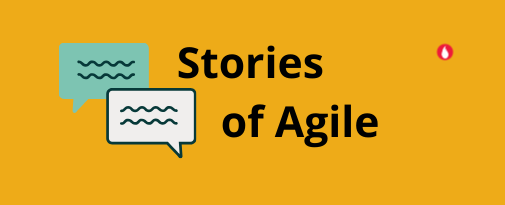When an organisation’s back is to the wall, it puts in place necessary incremental changes or gives a rallying cry for complete change. While both these options are valid, the final option is best chosen with the organisational culture in mind. Here is how Cargill, a global agricultural firm, faced with mounting losses and staff layoffs approached change. They kept their relationship-based culture firmly in mind, while choosing to take agile change for a trial run.

Cargill’s Journey
Cargill is a 155-year-old global food corporation spread across 70 countries. It is the largest privately held corporation in the United States in terms of revenue. In 2012, faced with losses, the CEO announced a restructuring to reflect new market needs. They also decided to try working with Agile methodologies. Till 2012, only Cargill’s software development team was using Agile methodologies. Then the entire IT and Finance teams decided to put in place Agile practices across their departments. The results piqued the curiosity of the other departments in Cargill. The ability of the teams to demonstrate value with ease, convinced them into adoption. Thus, Research, Marketing, and HR teams adopted Agile methodologies and ways of working.
Agile Stories from the L&D team
The L&D team too wanted to experiment with an Agile way of working. But they were unsure if they were ready to completely abandon the existing, proven ways. The L&D team decided to take Agile for a 90-day trial run. While it was a trial run, they promised themselves they would give it their ‘all’. If after everything they were not happy, they would go back to the world that was. With this surety the team dived in, all in. Here are some of their experiences and dilemmas
Restructuring the team:
L&D was a small team of 8-9 team members. Each one worked on specific areas independently. Restructuring and dividing themselves into two agile teams of four members each meant lesser projects at a time. They worried that their productivity would worsen. Much to their surprise and very similar to the Menlo experience of pair working, they found productivity soar! Team members were able to get more done together and take on more.
Adopting Agile ceremonies:
For a small team of experts, they worried that daily stand ups, sprint planning’s and reflection meetings would be an overkill of time and effort. Yet they adopted each of these in spirit and structure. Much like SAAB which had stand-up meetings till the CEO daily, The Cargill L&D team found these conversations, liberating. The team members were able to remove obstacles and find bandwidth far more seamlessly.
Interacting with their customer:
The L&D team would usually take the problem statement and return with the final learning program in 3- 6 months. They decided to try the reverse with the new methodology. They engaged the end user in conversations to co-create learning programs. For instance, when the L&D team had to design a graduate management program, they decided to have co-creation workshops with recent graduates and their managers. They facilitated the creation of a program rather than create it in silos.
While it is true that the L&D team took the agile transformation or change effort for a trial run of 90 days, they are yet to return it. What helped them stay the course, even though they were hesitant adopters? Here are some pointers.
Takeaways from the Cargill Story
Among others, two reasons helped the L&D team adopt and sustain an agile transformation.
1. Trial run, sure, but full-fledged
It is important to note while the L&D team decided to do a trial run of 90 days, they did not cherry pick their way to Agile. They implemented all aspects of Agile in their trial run. Structural changes, communication patterns, slicing of work into chunks, transparency, conversations with end users, reflection practices et all. This ‘all-in’ effort allowed them to taste the change and savour the impact it was creating on stakeholders. This further created momentum to sustain the change. A virtuous cycle, if you will.
2. Reinforcers proved critical for change
The L&D team’s agile transformation journey was reinforced by the troika of people-process-technology. Not only were all departments going through transformations of their own. The processes within the firm were changing to keep pace as well. One example is that Cargill abolished its annual appraisal and rating process. They instead adopted ‘Everyday Performance Management’. In a recent interview, Mr Raj Karunakaran, HR Head, Cargill India, has credited this performance management approach with creating empathy during COVID times too.
Agile transformations have a better chance of taking root when strengthened by structures, processes, and culture. Else they remain passion projects or lip service. Agile doesn’t mind a trial run, as long as you don’t cherry pick your milestones.
Apart from one story which captures the human centric change in the world of Agile, the Agile OWL brings to you every fortnight, the latest reads, books, trivia, and quote from the world of Agile and its methodologies. Stuff that caught our attention. This is edition 16 and we carry seven useful links for you. Tell us what you thought of them.

From social media:
1.MIT did a round up of the 10 most promising ideas from various Agile methodologies. Their pick ranged from iterative style of working to hybridized agile process. That got my attention. Read the short note on each of the ten points here.
2.It’s a new year and possibly each of us are setting goals for 2021. This article on what are the worst metrics to measure ourselves and our teams with is a timely read.
3. This share from Ron Jeffries on key computing concepts is a good visual representation of computing search. Applies to other areas of search and research as well!
From the bookshelf:
This book comes recommended from one of the founders of Agile as well, Kent Beck. This book talks about ‘What engineers know and how they know it’. While the book offers details , too much at times, it makes a strong case on why and how knowledge is built on top of one another.
From the tool box:
In this edition we carry a link from HBR, with steps and tips to brainstorm while working remotely. Check it out here.
From the trivia & fact box:
The noun quarantine comes from Italian quarantina giorni or forty days. It comes from the Venetian policy of quarantining ships from plague-stricken places for 40 days, ensuring no one infected is on board.
#AgileQuotes to sign off

Note : This post is Edition 16 of the Agile OWL from the OWL umbrella. The Agile OWL is a newsletter focused on the human experiences and stories within agile transformations. Sign up to receive the newsletter here



